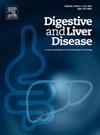Modeling liver regeneration using 3D human liver organoids to assess the impact of ischemia on hepatic regeneration during transplantation
IF 3.8
3区 医学
Q1 GASTROENTEROLOGY & HEPATOLOGY
引用次数: 0
Abstract
Liver transplantation is the treatment of choice for end-stage liver disease. However, its success is often compromised by ischemia-reperfusion injury (IRI), a major contributor to graft dysfunction. Liver regeneration is a crucial process that enables recovery following injury and transplantation, involving progenitor cell activation, tissue remodeling, and terminal differentiation. Understanding how ischemia affects this regenerative response is essential for developing strategies that improve post-transplant outcomes.In this study, we established a liver regeneration model using undifferentiated 3D human liver organoids (hLiOs). To model ischemic injury, undifferentiated hLiOs were subjected to cold storage at 4°C for 16 hours. Organoids subjected to ischemic preconditioning, as well as non-ischemic controls, were systematically analyzed at pre- and post-differentiation stages through high-resolution microscopy, gene expression analysis, and immunofluorescence.Undifferentiated hLiOs expressed higher levels of LGR5 and EpCAM but lower levels of albumin, HNF4A, and CYP3A4 compared to primary hepatocytes. Conversely, upon differentiation, hLiOs showed decreased LGR5 expression, increased albumin secretion, and high expression of CYP3A4 and HNF4A. We then evaluated the impact of cold ischemia on the differentiation capacity of hLiOs. Differentiated hLiOs showed increased expression of hepatic functional markers, such as HNF4A, CYP3A4, and albumin, with significantly higher levels observed in organoids that had been exposed to ischemia prior to differentiation. In contrast, alpha-fetoprotein, a marker of hepatic progenitor activation, was more highly expressed in non-ischemic organoids. This pattern suggests that ischemic preconditioning may have accelerated or enhanced terminal hepatic differentiation.While IRI can impair regeneration and lead to liver failure, regeneration also acts as a defense mechanism against ischemic damage. Understanding this interplay is critical for improving outcomes after liver transplantation. Our preliminary findings indicate that ischemic injury can modulate the regenerative trajectory of liver organoids, promoting a shift from progenitor activation toward functional maturation. These results support the utility of hLiOs as a relevant in vitro model to study the complex interplay between ischemia and liver regeneration. This platform may aid in identifying therapeutic strategies to manage IRI and enhance hepatic recovery following transplantation.This research was funded by the Italian Ministry of Health, Ricerca Corrente.
利用三维人肝类器官建模肝再生,评估移植过程中缺血对肝再生的影响
肝移植是治疗终末期肝病的首选方法。然而,它的成功往往受到缺血再灌注损伤(IRI)的影响,这是移植物功能障碍的主要原因。肝再生是损伤和移植后恢复的关键过程,涉及祖细胞活化、组织重塑和终末分化。了解缺血如何影响这种再生反应对于制定改善移植后预后的策略至关重要。在这项研究中,我们利用未分化的三维人肝类器官(hLiOs)建立了肝脏再生模型。为了模拟缺血性损伤,未分化的hLiOs在4°C冷藏16小时。通过高分辨率显微镜、基因表达分析和免疫荧光,系统分析了缺血预处理和非缺血对照的类器官分化前后阶段。与原代肝细胞相比,未分化的hLiOs表达更高水平的LGR5和EpCAM,但表达较低水平的白蛋白、HNF4A和CYP3A4。相反,分化后hLiOs表现为LGR5表达降低,白蛋白分泌增加,CYP3A4和HNF4A高表达。然后我们评估了冷缺血对hLiOs分化能力的影响。分化后的hLiOs显示肝脏功能标记物,如HNF4A、CYP3A4和白蛋白的表达增加,在分化前暴露于缺血的类器官中观察到明显更高的水平。相比之下,甲胎蛋白(肝祖细胞激活的标志)在非缺血性类器官中表达更高。这种模式表明,缺血预处理可能加速或增强了终末肝分化。虽然IRI会损害再生并导致肝衰竭,但再生也作为一种防御缺血性损伤的机制。了解这种相互作用对于改善肝移植后的预后至关重要。我们的初步研究结果表明,缺血性损伤可以调节肝类器官的再生轨迹,促进从祖细胞激活到功能成熟的转变。这些结果支持hLiOs作为研究缺血和肝脏再生之间复杂相互作用的相关体外模型的效用。该平台可能有助于确定治疗IRI的策略,并增强移植后肝脏的恢复。这项研究由意大利卫生部Ricerca Corrente资助。
本文章由计算机程序翻译,如有差异,请以英文原文为准。
求助全文
约1分钟内获得全文
求助全文
来源期刊

Digestive and Liver Disease
医学-胃肠肝病学
CiteScore
6.10
自引率
2.20%
发文量
632
审稿时长
19 days
期刊介绍:
Digestive and Liver Disease is an international journal of Gastroenterology and Hepatology. It is the official journal of Italian Association for the Study of the Liver (AISF); Italian Association for the Study of the Pancreas (AISP); Italian Association for Digestive Endoscopy (SIED); Italian Association for Hospital Gastroenterologists and Digestive Endoscopists (AIGO); Italian Society of Gastroenterology (SIGE); Italian Society of Pediatric Gastroenterology and Hepatology (SIGENP) and Italian Group for the Study of Inflammatory Bowel Disease (IG-IBD).
Digestive and Liver Disease publishes papers on basic and clinical research in the field of gastroenterology and hepatology.
Contributions consist of:
Original Papers
Correspondence to the Editor
Editorials, Reviews and Special Articles
Progress Reports
Image of the Month
Congress Proceedings
Symposia and Mini-symposia.
 求助内容:
求助内容: 应助结果提醒方式:
应助结果提醒方式:


